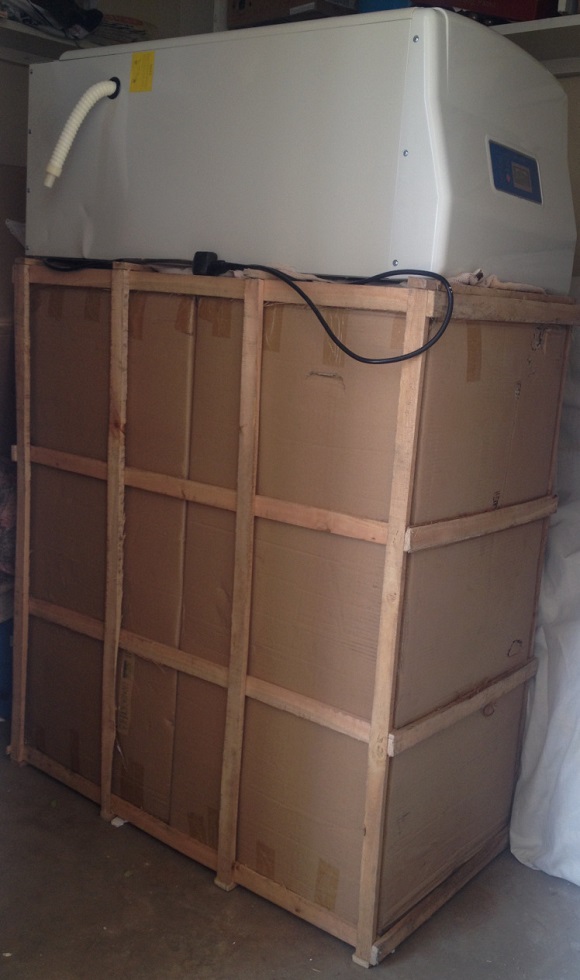
Busy, busy, busy…This quarter has been huge for our young agripreneurs in the GFAR-YPARD Young Agripreneurs Project. It’s now 10 months on since they thrilled the audiences at GCARD3 with their enthusiasm, drive and energy in describing their projects. These have all started with the young agripreneurs matched with mentors, engaged in coaching and training, and utilizing their seed funding aligned with their business plans. There have been the inevitable ups and downs – all part of being a young agripreneur and it’s great to see that they are all on track and embracing the challenges and opportunities that the YAP project has offered.

Busy, busy, busy…This quarter has been huge for our young agripreneurs in the GFAR-YPARD Young Agripreneurs Project. It’s now 10 months on since they thrilled the audiences at GCARD3 with their enthusiasm, drive and energy in describing their projects. These have all started with the young agripreneurs matched with mentors, engaged in coaching and training, and utilizing their seed funding aligned with their business plans. There have been the inevitable ups and downs – all part of being a young agripreneur and it’s great to see that they are all on track and embracing the challenges and opportunities that the YAP project has offered.
Lillian Beauttah shares the latest exciting news on her YAP project to build “The African Desert Greenhouse”, an artificial, closed ecosystem that creates viable crop growing conditions requiring a minimal amount of water.
Entrepreneurship has been defined as the ability to simultaneously exploit resources and manage talent, an exercise that we as YAPs are acclimatizing to. A lesser-known tidbit about the entrepreneurial experience, is that it can be analogically compared to the practice of bamboo farming. Lying dormant for the first 4 years, with no sign of life, the bamboo seed finally sprouts at beginning of the 5th year, when growth rapidly takes on an exponential rate.
The incubation period, tumultuous to both the bamboo and the entrepreneur, is fundamental to their makeup, that of true grit. Though unlike the tranquil and wholesome images the term ‘incubation’ might conjure up, these last few months have been quite far from that. Allow me to elaborate.
Entrepreneurship Mode 2.0
The construction process of the structural elements of the greenhouse, i.e. the timber frame and hydroponic shelving units, in retrospect was a lot simpler than initially anticipated, but I guess everything normally is after the hurdles have been leapt over and quagmires narrowly swerved past. This unfortunately was where the coasting-mode of my journey came to an abrupt end. Cue ‘ Entrepreneurship Mode 2.0’.
In November, we needed to import electrical parts from China, from two different suppliers. The supplier elimination process itself was tedious. Since over a thousand companies sell what you’re looking for in approximately the same price range, post the ‘Can you ship this to Kenya?‘ discussion, our intel on who seemed less shoddy banked heavily on pure speculation, and at times educated guesses disguised as deductive reasoning. Now I understand why importers of mass goods would rather plan a trip to China, than deal with the mental, ‘Did I just wire money to thugs?‘ hassle.
The company was going under
When it turned out that the supplier was still reachable by email, and even quite pleasant, after the payments were made, I gave a sigh of relief. It turned out that having the suppliers ship me the items directly would have been too expensive so I opted to use a clearing and forwarding company. What I wasn’t aware of though was that the company was going under; this I recently learnt meant that they had outsourced their package retrieval and shipping functions to a freelancer.
Steve Jobs once noted that half of what separates successful entrepreneurs and unsuccessful ones is persistence, a quote that I many a times mumble to myself. What this little gem fails to point out, though, is that more than half the time, that persistence is required when dealing with the human error element.
With a background in engineering, I enjoy working with logic based systems where x = y or a = b. In entrepreneurship, these rules need not (do not) apply. For every ounce of effort you exude, you will not reap the equivalent in return because the world of business unlike that of the scientist, characterized heavily by the anthropomorphic interactions, is fraught with inconsistency and inefficiency.
Misplaced your goods
Unanswered emails and calls were the order of the day when dealing with the clearing and forwarding company, along with claims that my goods hadn’t arrived at their warehouse when I had the signed receipts of arrival. Then there was the, ‘We’ve misplaced your goods in our warehouse’ scare followed by the, ‘ We’ve shipped some packages. We hope that yours were among them’ debacle.
Finally, by the 21st of February, I received confirmation that the packages had arrived in Nairobi after a 2-week hold up at the port, only problem was that the cost of shipping had leapt from 120$ to 2,170$…Yup! You read that right!
Fast forward to 2nd March, the goods will be dropped off early this morning and I can’t wait! How did I managed to pay off a 2,050$ difference you may ask? Good old human error! Thanks to a slight miscalculation in shipment volume (by a decimal point to be exact), I was treated to a mini-panic attack’s worth of a surprise. Looking back now, I can have a good laugh.

Not remotely possible
The last segment of our build will consist of putting in the hydroponic piping. We had previously engaged the only Kenyan company with expertise in hydroponic builds, so we had an existing quotation. During the long shipment wait, I set about locating cheaper local suppliers for the different parts and succeeded in bringing down the price to almost half of the initial cost. By appealing to the company’s more altruistic elements, we hoped that they would be willing to allow us to hire their technician and purchase our own material. Not even remotely possible.
Our hydroponic shelves are 3-tiered so our only options are that they fit out one tier or try as much as possible to give us a ‘good discount’ (which with any profit driven company obviously won’t be that good). The first option will have us half-baked and force us to incur two other rounds of costs ferrying material to the site and the second will still be too expensive. Que sera, sera.
The grind is the reward
Only 9 months into the operation, and entrepreneurship is already proving a bit too difficult. With 39 more months to go before, Operation ‘Exponential Bloom’ kicks in, how does one manage the emotional haemorrhaging? Best-selling author Jeff Goins in his book ‘The Beginner’s Guide to Building an Audience‘ emphatically states that, ‘The grind is the reward’. When you switch your outlook on your tasks from being mere means to an end but to becoming ends in themselves, you’re able to appreciate the ups and downs.
The beauty of entrepreneurship, unlike other career avenues is that it engages you holistically, one eventually coming to the realisation that they require an armoury worth of skills apart from just intelligence, to succeed. I’m convinced that 1) Entrepreneurship offers multiple avenues for growth if only fully embraced, and 2) Entrepreneurship is the only career option worthy of me. The rules here are very clear, ‘Submit and you will succeed.’
This blogpost by Lillian Beauttah originally appeared on the GFAR blog.
Lillian Beauttah (limobachi(at)gmail.com) is one of six finalists in the Youth Agripreneurs Project, a pilot project targeting young agricultural entrepreneurs (“agripreneurs”), co-organized by GFAR and YPARD. The YAP Finalists launched their projects during the #GCARD3 Global Conference in Johannesburg, South Africa, 5-8 April 2016. Read Lillian’s original YAP proposal here.
Photo credits: Lillian Beauttah

